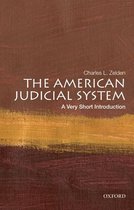Popular Participation in Japanese Criminal Justice From Jurors to Lay Judges
Afbeeldingen
Sla de afbeeldingen overArtikel vergelijken
Auteur:
Andrew Watson
- Engels
- Hardcover
- 9783319350769
- 04 november 2016
- 177 pagina's
Samenvatting
This book analyses the mixed courts of professional and lay judges in the Japanese criminal justice system.
This book analyses the mixed courts of professional and lay judges in the Japanese criminal justice system. It takes a particular focus on the highly public start of the mixed court, the saiban-in system, and the jury system between 1928-1943. This was the first time Japanese citizens participated as decision makers in criminal law. The book assesses reasons for the jury system's failure, and its suspension in 1943, as well as the renewed interest in popular involvement in criminal justice at the end of the twentieth century.
Popular Participation in Japanese Criminal Justice proceeds by explaining the process by which lay participation in criminal trials left the periphery to become an important national matter at the turn of the century. It shows that rather than an Anglo-American jury model, outline recommendations made by the Japanese Judicial Reform Council were for a mixed court of judges and laypersonsto try serious cases. Concerns about the lay judge/ saiban-in system are raised, as well as explanations for why it is flourishing in contemporary society despite the failure of the jury system during the period 1928-1943. The book presents the wider significance of Japanese mixed courts in Asia and beyond, and in doing so will be of great interests to scholars of socio-legal studies, criminology and criminal justice.
This book analyses the mixed courts of professional and lay judges in the Japanese criminal justice system. It takes a particular focus on the highly public start of the mixed court, the saiban-in system, and the jury system between 1928-1943. This was the first time Japanese citizens participated as decision makers in criminal law. The book assesses reasons for the jury system's failure, and its suspension in 1943, as well as the renewed interest in popular involvement in criminal justice at the end of the twentieth century.
Popular Participation in Japanese Criminal Justice proceeds by explaining the process by which lay participation in criminal trials left the periphery to become an important national matter at the turn of the century. It shows that rather than an Anglo-American jury model, outline recommendations made by the Japanese Judicial Reform Council were for a mixed court of judges and laypersons to try serious cases. Concerns about the lay judge/ saiban-in system are raised, as well as explanations for why it is flourishing in contemporary society despite the failure of the jury system during the period 1928-1943. The book presents the wider significance of Japanese mixed courts in Asia and beyond, and in doing so will be of great interests to scholars of socio-legal studies, criminology and criminal justice.
This book analyses the mixed courts of professional and lay judges in the Japanese criminal justice system. It takes a particular focus on the highly public start of the mixed court, the saiban-in system, and the jury system between 1928-1943. This was the first time Japanese citizens participated as decision makers in criminal law. The book assesses reasons for the jury system's failure, and its suspension in 1943, as well as the renewed interest in popular involvement in criminal justice at the end of the twentieth century.
Popular Participation in Japanese Criminal Justice proceeds by explaining the process by which lay participation in criminal trials left the periphery to become an important national matter at the turn of the century. It shows that rather than an Anglo-American jury model, outline recommendations made by the Japanese Judicial Reform Council were for a mixed court of judges and laypersonsto try serious cases. Concerns about the lay judge/ saiban-in system are raised, as well as explanations for why it is flourishing in contemporary society despite the failure of the jury system during the period 1928-1943. The book presents the wider significance of Japanese mixed courts in Asia and beyond, and in doing so will be of great interests to scholars of socio-legal studies, criminology and criminal justice.
This book analyses the mixed courts of professional and lay judges in the Japanese criminal justice system. It takes a particular focus on the highly public start of the mixed court, the saiban-in system, and the jury system between 1928-1943. This was the first time Japanese citizens participated as decision makers in criminal law. The book assesses reasons for the jury system's failure, and its suspension in 1943, as well as the renewed interest in popular involvement in criminal justice at the end of the twentieth century.
Popular Participation in Japanese Criminal Justice proceeds by explaining the process by which lay participation in criminal trials left the periphery to become an important national matter at the turn of the century. It shows that rather than an Anglo-American jury model, outline recommendations made by the Japanese Judicial Reform Council were for a mixed court of judges and laypersons to try serious cases. Concerns about the lay judge/ saiban-in system are raised, as well as explanations for why it is flourishing in contemporary society despite the failure of the jury system during the period 1928-1943. The book presents the wider significance of Japanese mixed courts in Asia and beyond, and in doing so will be of great interests to scholars of socio-legal studies, criminology and criminal justice.
Productspecificaties
Wij vonden geen specificaties voor jouw zoekopdracht '{SEARCH}'.
Inhoud
- Taal
- en
- Bindwijze
- Hardcover
- Oorspronkelijke releasedatum
- 04 november 2016
- Aantal pagina's
- 177
- Illustraties
- Nee
Betrokkenen
- Hoofdauteur
- Andrew Watson
- Hoofduitgeverij
- Springer International Publishing Ag
Overige kenmerken
- Editie
- 1st ed. 2016
- Extra groot lettertype
- Nee
- Product breedte
- 152 mm
- Product hoogte
- 19 mm
- Product lengte
- 216 mm
- Studieboek
- Nee
- Verpakking breedte
- 148 mm
- Verpakking hoogte
- 210 mm
- Verpakking lengte
- 210 mm
- Verpakkingsgewicht
- 363 g
EAN
- EAN
- 9783319350769
Kies gewenste uitvoering
Kies je bindwijze
(2)
Prijsinformatie en bestellen
De prijs van dit product is 57 euro en 99 cent.
2 - 3 weken
Verkoop door bol
- Prijs inclusief verzendkosten, verstuurd door bol
- Ophalen bij een bol afhaalpunt mogelijk
- 30 dagen bedenktijd en gratis retourneren
- Dag en nacht klantenservice
Rapporteer dit artikel
Je wilt melding doen van illegale inhoud over dit artikel:
- Ik wil melding doen als klant
- Ik wil melding doen als autoriteit of trusted flagger
- Ik wil melding doen als partner
- Ik wil melding doen als merkhouder
Geen klant, autoriteit, trusted flagger, merkhouder of partner? Gebruik dan onderstaande link om melding te doen.








